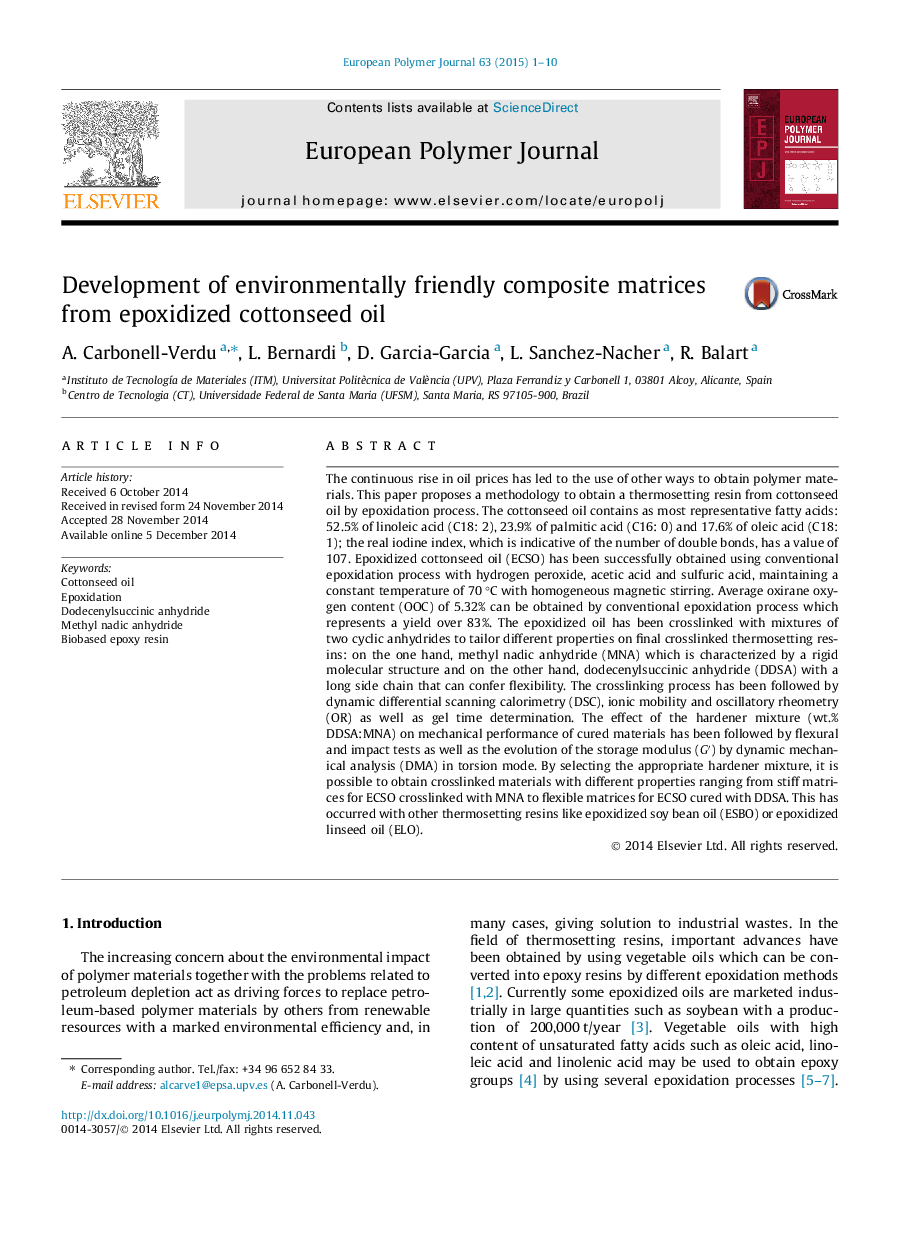| کد مقاله | کد نشریه | سال انتشار | مقاله انگلیسی | نسخه تمام متن |
|---|---|---|---|---|
| 1395420 | 1501372 | 2015 | 10 صفحه PDF | دانلود رایگان |
• ECSO has been obtained using conventional epoxidation.
• ECSO has been crosslinked with mixtures of MNA and DDSA.
• The crosslinking process has been followed by DSC and OR.
• The effect of the hardeners have been analyzed by mechanical properties.
• Epoxidized cottonseed oil (ECSO) can compete with epoxidized soybean oil (ESBO).
The continuous rise in oil prices has led to the use of other ways to obtain polymer materials. This paper proposes a methodology to obtain a thermosetting resin from cottonseed oil by epoxidation process. The cottonseed oil contains as most representative fatty acids: 52.5% of linoleic acid (C18: 2), 23.9% of palmitic acid (C16: 0) and 17.6% of oleic acid (C18: 1); the real iodine index, which is indicative of the number of double bonds, has a value of 107. Epoxidized cottonseed oil (ECSO) has been successfully obtained using conventional epoxidation process with hydrogen peroxide, acetic acid and sulfuric acid, maintaining a constant temperature of 70 °C with homogeneous magnetic stirring. Average oxirane oxygen content (OOC) of 5.32% can be obtained by conventional epoxidation process which represents a yield over 83%. The epoxidized oil has been crosslinked with mixtures of two cyclic anhydrides to tailor different properties on final crosslinked thermosetting resins: on the one hand, methyl nadic anhydride (MNA) which is characterized by a rigid molecular structure and on the other hand, dodecenylsuccinic anhydride (DDSA) with a long side chain that can confer flexibility. The crosslinking process has been followed by dynamic differential scanning calorimetry (DSC), ionic mobility and oscillatory rheometry (OR) as well as gel time determination. The effect of the hardener mixture (wt.% DDSA:MNA) on mechanical performance of cured materials has been followed by flexural and impact tests as well as the evolution of the storage modulus (G′) by dynamic mechanical analysis (DMA) in torsion mode. By selecting the appropriate hardener mixture, it is possible to obtain crosslinked materials with different properties ranging from stiff matrices for ECSO crosslinked with MNA to flexible matrices for ECSO cured with DDSA. This has occurred with other thermosetting resins like epoxidized soy bean oil (ESBO) or epoxidized linseed oil (ELO).
Figure optionsDownload as PowerPoint slide
Journal: European Polymer Journal - Volume 63, February 2015, Pages 1–10
